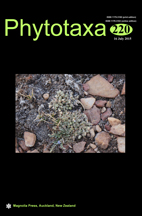Abstract
The liverwort family Frullaniaceae is circumscribed to include the single genus, Frullania, and has a complex and confusing taxonomical history. An overview is provided for the infrageneric classification adopted for the forthcoming worldwide checklist based on recent morphological and molecular studies. The genus is preliminarily subdivided into eleven subgenera, F. subg. Chonanthelia, F. subg. Diastaloba, F. subg. Diversitextae, F. subg. Frullania, F. subg. Homotropantha, F. subg. Mammillosae, F. subg. Meteoriopsis, F. subg. Microfrullania, F. subg. Saccophora, F. subg. Steerea, and F. subg. Thyopsiella, as well as several sections. However, some of the subgeneric divisions are only doubtfully recognized because there is still insufficient knowledge to arrive at a decision regarding their systematic status and placement. The taxa may be either originally not well described, not restudied recently or molecular analyses point to a more complex internal structure of the respective group. Fourteen new synonyms, eight new combinations, five new names, eight lectotypifications, and one new variety are provided.

